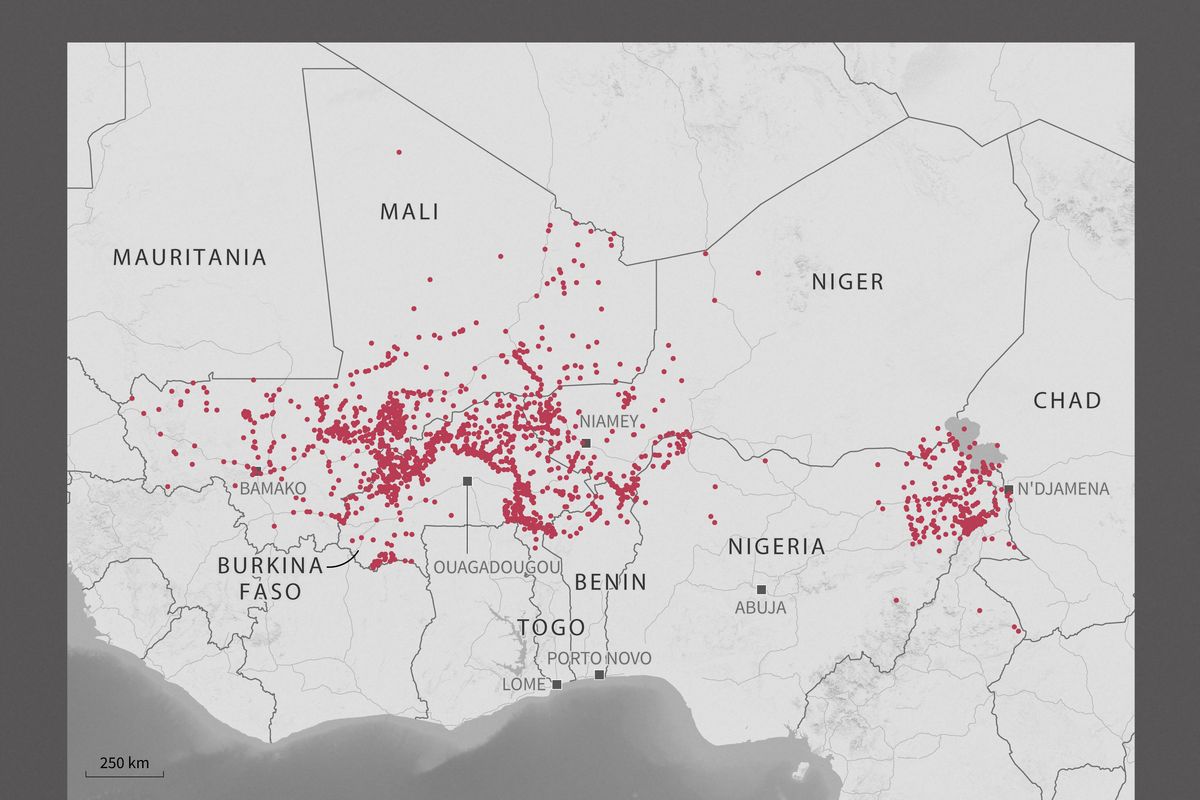Since December 2011, when the last American troops officially left Iraq, the members of Al Qaeda in Iraq (AQI) were mostly wiped out or on the run. However, the remaining AQI soldiers found new opportunities to rise again and went through a metamorphosis steered by Abu Bakr al-Baghdadi. The violent confrontations between Al-Maliki’s majority Shiite government and the Sunnis population in Iraq, as well as the civil war in Syria, provided a fertile ground for the new organization – The Islamic State – to revive and capture vast portions of territory including cities, oil fields, and military installations.
Despite an intensive bombing campaign started in September 2014 by a United States led coalition, the Islamic State (ISIS) still remains uncontained, according to a recent U.S. Intelligence Community report. The current situation begs the question, why is the Islamic State still able to resist and continue to challenge western powers?
Any plan focusing primarily on the use of kinetic force against the Islamic State will fall short in terms of reducing ISIS’ global reach and weakening some of its critical strengths: communication, recruitment, financing, and terror plot coordination, which are mainly conducted in cyberspace. This will require an entirely new strategy to combat non-state actors in both physical and virtual space. While a country like Russia was able to develop and apply a hybrid warfare doctrine against Georgia in 2008, there is not yet any strategy involving “hybrid asymmetric warfare” against a group like the Islamic State.
Communication
Despite the fact that the U.S. is not experiencing a high rate of Islamic State sympathizers among its citizens, some findings are somewhat alarming. For instance, a Brookings Institution report titled, “The ISIS Twitter Census,” shows through social media metrics the geographical distribution of ISIS supporters, tweeting patterns, follower ratio, and number of accounts followed. The most interesting finding indicates the U.S. and U.K. are standing at the fourth and tenth rank respectively for Twitter users, although the numbers are quite small in comparison to the total numbers of Twitter accounts related to ISIS. But the sample used in this study provides a certain indication of the level of support ISIS is receiving from high valued target countries (US and UK) and the rest of the world. In addition to Twitter, the Islamic State is well known for its active use of Facebook. One major concern is the increasing use of communication applications such as Telegram and smartphones that are mostly impenetrable due to robust encryption algorithms.
Recruitment
The Islamic State has been very active in producing high quality and effective recruitment videos shown on the Internet. According to Javier Lesaca, a visiting scholar at George Washington University who follows ISIS audiovisual engagement strategy, the group has released 900 videos since early 2015. The videos were developed by more than 30 producers and target young men and women from around the world. Many of these videos are produced with narratives that take into account languages, cultural characteristics, and emotional appeal. Many of the videos include graphic violence emulating the cinematography style of blockbuster movies or video games. According to a recent United Nations report, the Islamic State was able to recruit 25 thousand fighters from more than 100 countries mainly through effective communication and recruitment strategies on the Internet.
Financing
The Islamic State is also very active in using the Internet to make money. As recently reported by Business Insider, the group is now controlling private access to the Internet in many cities in Syria and Iraq, forcing individuals to use the services offered by Internet cafes controlled by the Islamic State. Before ISIS took over Raqqa, the Syrian city reportedly had no more than 20 Internet cafés. Today, the number has jumped to a staggering 500. This strategy of restricting private access to cyberspace and controlling Internet cafes provides the Islamic State with the capacity to monitor the utilization of Internet and to prevent potential discontent or dissidence about the Caliphate from being exposed to the rest of the world. The Islamic State is also connected to a lucrative art and ancient artifacts black market taking place in cyberspace.
Coordinating Terror
A recent report published in the New York Times reveals how much the Islamic State has been able to expand it ability to influence and coordinate terror around the world. Since 2014, the Islamic State conducts military activity on a daily basis in two countries (Iraq and Syria) and controls “provinces” in eight countries (Algeria, Afghanistan, Egypt, Lybia, Nigeria, Pakistan, Saudi Arabia, and Yemen). Outside of Iraq and Syria, ISIS has mounted 60 attacks in 16 countries claiming more than 700 lives this year alone. Those numbers include the recent attacks in Paris and San Bernardino. This rapid global expansion of the Islamic State is possible because of the ingenuity in the use of cyberspace.
Embracing a hybrid asymmetric warfare
So far, Western countries are still debating the possibility of deploying boots on the ground and most of them have not rolled out any effective cyber strategy to counter the Islamic State. A few countries, including the United States, have recently touted some successful counter propaganda programs through the releases of 300 videos on YouTube. The most popular video has about 120 thousand viewers from around the world—a very modest number. The Kurds had more success with a video seen by 1.2 million viewers that featured a rescue operation of Kurdish prisoners.
In reaction to the vacuum left by Western countries in cyberspace, the hacking group Anonymous recently pledged to wage a war against the Islamic State. This developing situation could mark the opening of a new front with unexpected allies or “frienemies” (Russia and Anonymous) that illustrates the absolute necessity for the West to develop a “hybrid asymmetric warfare” doctrine.
What should be the core elements of this “hybrid asymmetric warfare” doctrine? On the military kinetic side, the massive bombing should be reduced and the campaign focused on surgical, highly effective (even symbolic) air strikes and ground operations that support Western allies in the region, such as the Kurds. The problem with bombing campaigns is the collateral damage to the civilian population. Each time civilians get killed by Western bombs, some of the widows and the orphans become the next wave of soldiers for the Caliphate and terrorists abroad. Currently, the bombing campaigns are far from defeating or containing the Islamic States. They are used against the West in successful regional and international recruitment campaigns.
In Iraq, the coalition against the Islamic State has to offer a credible and trustworthy option to the Sunnis population through the revival, if possible, of the Sunni Awakening in Anbar province. The former alliance between the United States and key sheiks in Anbar led to the defeat of Al Qaeda in Iraq (AQI) after the 2007 surge. Any progress in re-establishing this alliance with Sunni spiritual or political leaders should be publicized on the Internet. The idea is to provide a counter narrative to the claim that the Islamic State is the only option as it relates to the protection of the Sunni population against the Shiite led governments in Iraq and Syria.
On the cyber operations side, the strategy of the West is failing in three areas. Information supremacy over a non-state actor, with flexible capabilities as well as fluid and ingenious tactics, is far more challenging than a state actor with known capabilities and tactics. In the case of the Islamic State, most of the recruitment videos it releases on the Internet respect basic constitutional rights supported by Western countries, including the U.S. First Amendment: Freedom of Speech. On the other hand, for Western citizens who becomes enemy combatants and then want to return to their homeland, there are no programs to reintegrate them into society and use them to counter the Islamic State propaganda. For instance, more than 60 defectors have spoken with Western media since the summer of 2015, describing the reasons why they are fleeing the Islamic State and its barbarian violence against other Muslims. In hybrid asymmetric warfare, this type of narrative should be seen as high value and used extensively on the Internet against the Islamic State. However, Western authorities see Islamic State defectors as criminals or enemy combatants who should be punished rather than enrolled in a disengagement program that includes consent to publicly release their experience on the battlefield (after being properly vetted).
Regarding the communication campaign, Western countries should be more active in countering the Islamic State on social media by emulating popular accounts and creating confusion. There are examples of under cover operations in which U.S. government contractors created “mirror profiles” of highly followed Twitter accounts of Taliban leaders during the Afghan war. The operation intended to confuse Taliban Twitter account followers by sending out conflicting messages and less radicalized rhetoric against the West. In the end, the U.S. covert Twitter account had more followers than the Taliban spokesperson. The same thing could be done on other social media sites. This approach will require some level of coordination with non-state actors, such as Anonymous, to protect these covert accounts from being shutdown by any third party offensive operations.
Finally, many Western intelligence agencies are whining about their inability to pierce the encryption that protects the communications of Islamic State members and operatives deployed in Western countries. Although this claim is partially valid, these agencies can analyze communication patterns without needing the content of the communication. Moreover, encryption programs do not necessarily prevent analysis of metadata, which can provide enough intelligence to guide investigations on the ground. As a matter of fact, the counter-terrorism advisor to the French government, François Heisbourg, admitted in an interview with NBC that the strength of French intelligence was to have the names of some of the Paris attackers on a list; the weakness was not to monitor those people through investigation and physical surveillance.
A smooth blending of kinetic and cyber operation is crucial to defeat the Islamic State.













